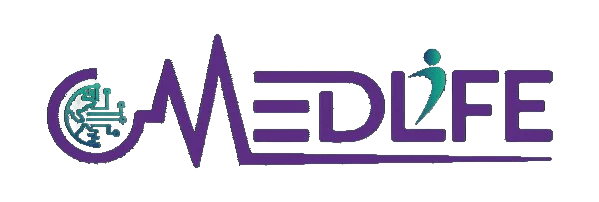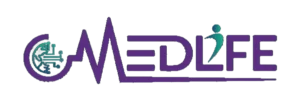Let’s be honest, billing for physical therapy is like trying to decode a foreign language. With all the codes, time units, modifiers, and payer rules, the payment structure can easily feel overwhelming. But the good news is that once you understand the basic concept of CPT codes and their proper usage, it becomes simpler and clearer.
Need Reliable Physical Therapy Billing Solutions?
Talk to our team and discover how we can improve claim accuracy and reimbursement timelines.
TALK TO AN EXPERTIn 2025, with new updates to documentation standards and insurance expectations, gaining a clear understanding of effective medical billing is more crucial than ever. So, whether you are a therapist, a clinic manager, or even someone directly handling the billing, this guide will help you through the must-know CPT code essentials.
Let’s break it all down.
What Are CPT Codes?
CPT stands for Current Procedural Terminology. These five-digit numbers are associated with the services you provided in a session; they are not linked with the diagnosis, which involves ICD-10. These codes play a vital role when it comes to talking to billing insurance companies to ensure proper reimbursement.
Sometimes, sessions get denied or underpaid simply because the coding or documentation wasn’t done right, and that’s usually what causes the issue.
Types of CPT Codes You Should Know
It is important to have an understanding of the types of CPT codes, as this will help you in using them accordingly. Thankfully, most physical therapists use only one category, and that is category one.
Category I – Standard Clinical Services
This is the primary category that you will access daily. These codes cover exercise therapy (97110), gait training (97116), and manual therapy (97140). They are authorized, billable, and accepted everywhere.
Category II – Performance Tracking
These optional codes are meant for tracking specific qualitative indicators. These codes are non-impactable and are not frequent in physical therapy billing.
Category III – Emerging Techniques
They are temporary codes assigned to new treatments. These codes are used rarely unless you are providing advanced interventions that aren’t accepted universally yet.
In Short, Category I will do the majority of the work. The other codes are good to be aware of, but won’t be needed for daily claims.
Timed vs. Untimed Codes (And the 8-Minute Rule)
Let’s move on to billing now that you understand the types. CPT codes are classified into two categories:
Untimed (Service-Based)
These are billed once per session, regardless of the time taken.
Examples:
97161-97163: PT evaluations
97010: Hot/cold packs
97014: Unattended electrical stimulation
Timed Codes
Billed in 15-minute units and governed by the 8-minute rule, billing for a unit requires at least 8 minutes of care.
Popular timed codes include:
97110: Therapeutic exercise
97530: Functional activities
97112: Neuromuscular re-education
97535: Self-care/home training
97140: Manual therapy
97035: Therapeutic ultrasound
Quick billing tip: Measure the minutes spent on timed treatments first. Then, apply the following calculations:
8—22 mins = 1 unit
23—37 mins = 2 units
38—52 mins = 3 units …and so on
This is extremely important when billing for insurance claims to minimize denials.
CPT Code Examples with Smart Documentation
Here’s how to bill smarter and support your claims:
| Code | Treatment | What to Document |
| 97110 | Strengthening, stretching | Area treated, type of exercise, patient progress |
| 97530 | Lifting, reaching, and balance tasks | Functional goals and specific movements |
| 97112 | Coordination, balance, and posture | Techniques used and outcomes noted |
| 97535 | ADL or home task training | Skills taught, patient’s response |
CPT Code Examples with Smart Documentation
Each of the codes you bill and the documentation you submit must match. For example, therapeutic exercises that include strengthening or stretching are billed under 97110. Be sure to note what area of the body is treated, what exercise is done, and any measurable progress the patient made regarding that exercise. Similarly, if you are billing under 97530 for functional tasks such as lifting, reaching, or work balancing, note the objectives that lie under these activities and the targeted goals.
For 97112, covering the neuromuscular re-education, such as improving coordination, balance, and posture, including the techniques used and any patient outcomes observed during or after the session. Also, while billing 97535 for training in self-care or home management, record the ADLs taught, the patient’s reaction, and what, if anything, was provided for use at home.
Claim submissions require well-documented notes that outline the care provided, ensure the validity of the submitted codes, and counter claim scrutiny. Notes such as these guarantee accuracy and all due payments for provided care.
Billing in 2025: Stay Ahead of the Game
With the billing guidelines 2025, payers expect clear documentation and accurate unit tracking. Double billing of untimed codes or applying the 8-minute rule inappropriately are common but avoidable errors.
Every process, whether performed manually or automated through billing software, requires accuracy. And if you’re billing the insurance companies, modifiers like GP or KX may be needed for them to get approved.
Choose Medlife for Physical Therapy Billing
Medlife makes physical therapy billing easier and more efficient. We handle everything from using the right CPT codes to submitting clean claims and following up on payments. Our team knows the ins and outs of PT billing, so you don’t have to stress about paperwork or payer rules.
With Medlife, you get clear reports, fewer denials, and more time to focus on your patients. Let us take care of your billing, so you can focus on care.


